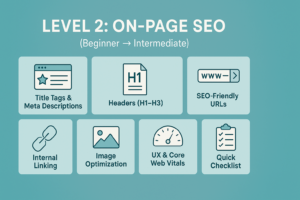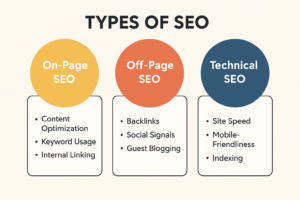SEO (Search Engine Optimization)
If you’re new to digital marketing, SEO (Search Engine Optimization) is one of the most important concepts to understand. It helps your website rank higher on search engines, attract organic traffic, and grow your online presence. This beginner’s guide will cover everything from what SEO is, how search engines work, to keyword research and optimizing your first blog post.
What is SEO?
SEO (Search Engine Optimization) is the process of improving your website so that it ranks higher in search engine results pages (SERPs). The higher your website ranks, the more visible it becomes to potential visitors. SEO involves optimizing content, website structure, and building authority online.
Why it matters: Businesses, bloggers, and marketers use SEO to drive free, targeted traffic to their websites, ultimately increasing leads, conversions, and brand visibility.
How Search Engines Work: Crawling, Indexing, and Ranking
Search engines like Google use complex algorithms to show the most relevant results for a user’s query. The process involves three main steps:
Crawling: Search engines use bots (crawlers) to discover new and updated web pages.
Indexing: Crawled pages are analyzed and stored in the search engine’s database. Only indexed pages can appear in search results.
Ranking: Search engines rank indexed pages based on relevance, quality, and user experience.
Understanding this process helps beginners know why SEO is necessary and how search engines determine which pages to show.
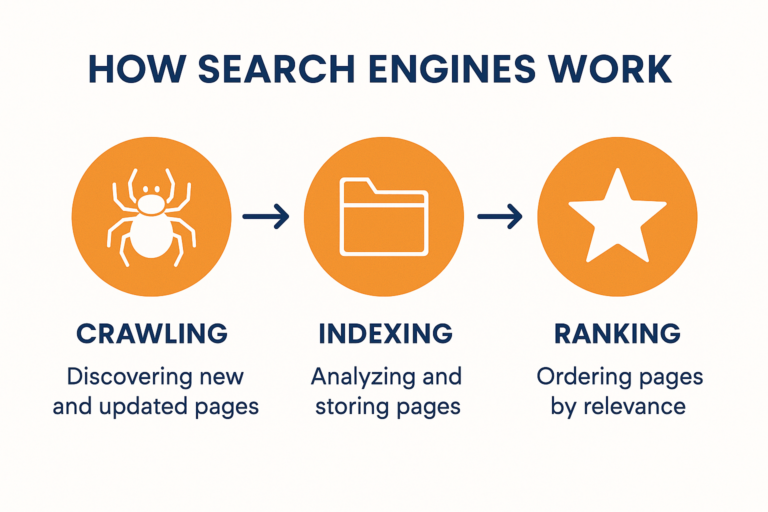
Types of SEO: On-Page, Off-Page, and Technical SEO
SEO is broadly divided into three types:
On-Page SEO: Optimization done directly on your website, including content, meta tags, headers, images, and internal links.
Off-Page SEO: Actions taken outside your website to improve authority, like backlinks, social signals, and online mentions.
Technical SEO: Ensures that your website is crawlable and indexable, focusing on site speed, mobile-friendliness, HTTPS, and structured data.
Understanding these types helps you focus on a complete SEO strategy rather than isolated tactics.
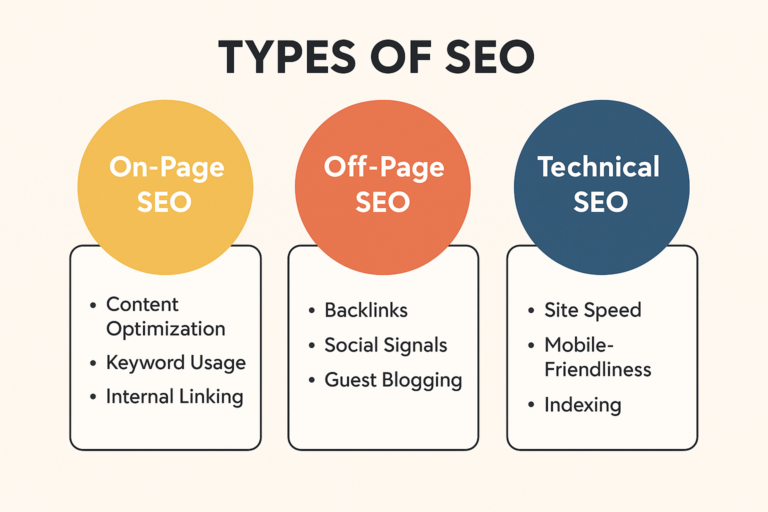
Understanding Keywords: What They Are & Why They Matter
Keywords are the phrases or terms users type into search engines. For example, “best SEO tips for beginners” is a keyword phrase. Using relevant keywords helps search engines understand what your content is about and match it with user searches.
Why they matter: Proper keyword targeting ensures your content reaches the right audience, improving organic traffic and engagement.
How to Do Keyword Research for Beginners
Keyword research is the foundation of SEO. Here’s how beginners can start:
Brainstorm seed keywords: Start with terms related to your niche.
Use keyword tools: Tools like Google Keyword Planner, Ubersuggest, or Ahrefs help find search volume and competition.
Analyze intent: Make sure the keyword matches what your audience wants (informational, transactional, or navigational).
Focus on long-tail keywords: Longer phrases like “how to do keyword research for beginners” are easier to rank for and attract targeted traffic.
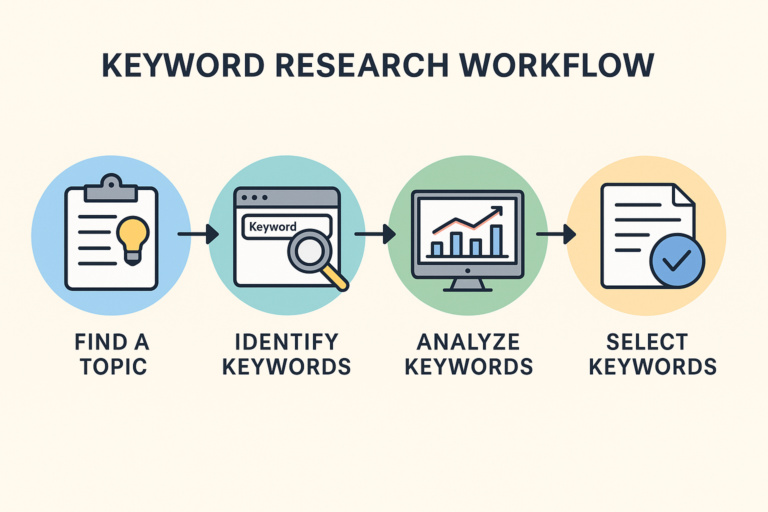
SEO vs SEM: What’s the Difference and Why It Matters
SEO is about improving organic rankings, while SEM (Search Engine Marketing) includes paid strategies like Google Ads.
SEO: Free, long-term results, organic traffic
SEM: Paid, faster visibility, short-term campaigns
For beginners, focusing on SEO builds a sustainable online presence, while SEM can complement campaigns for quick traffic boosts.
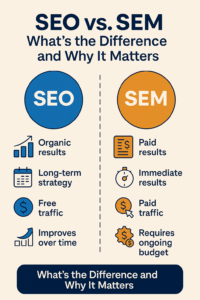
Small businesses can benefit significantly from SEO:
Increase visibility: Rank higher in local and national searches.
Build credibility: A high-ranking website earns trust.
Cost-effective marketing: Organic traffic reduces paid ad dependency.
Targeted audience: SEO brings users actively searching for your product or service.
In today’s competitive market, small businesses that ignore SEO miss out on potential leads and growth.
How to Optimize Your First Blog Post for SEO
Here’s a step-by-step approach for beginners:
Choose a primary keyword: Make it the focus of your blog.
Write high-quality content: Solve a problem or answer a question.
Use headers (H1, H2, H3): Organize content for readability and SEO.
Optimize meta title and description: Include your primary keyword naturally.
Add internal and external links: Connect to related content and credible sources.
Optimize images: Use descriptive file names and alt tags.
Focus on readability: Short paragraphs, bullet points, and clear language.
Following these steps ensures your first blog post is SEO-friendly and ready to attract organic traffic.
Conclusion
Learning SEO is essential for anyone starting in digital marketing. By understanding what SEO is, how search engines work, types of SEO, keyword research, and optimizing your content, beginners can build a strong foundation for long-term online success. Start applying these strategies today, and watch your website grow in visibility, traffic, and authority.
